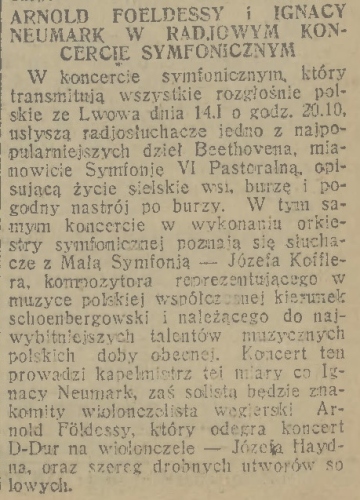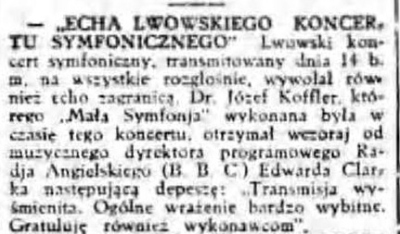![Symphony No. 1 [Kleine Sinfonie] for small orchestra (1930)](/upload/thumb/2025/03/ue_koffler01_0001_auto_800x900.jpg)
Symphony No. 1 [Kleine Sinfonie] for small orchestra (1930)
Instrumentation: 2 flutes, 2 oboes, 3 clarinets, saxophone, 2 bassoons, trumpet, trombone, percussion, harp, guitar, 4 mandolins, guitar, strings
Manuscript: WSLB. Without call number.
Premiere: Lwów, 14 January 1936, conductor – Ignacy Neumark (Gazeta Lwowska 1936, nos. 8, 12)
Movements: I. Allegro molto moderato; II. Andante molto tranquillo; III. Allegro vivace e giocoso
Perf. Polish Radio Orchestra, Wojciech Michniewski, conductor
Warsaw Music Encounters 1996, May 11, 1996, 6:00 PM, Concert Studio S-1
composed specifically for the radio. The technical limitations of the then radio technology were most likely responsible for the choice of a small instrumental ensemble made up of five separate groups: strings, woodwinds (quite numerous, including an alto saxophone and a contrabassoon), brass (only trumpet and trombone), pitched instruments (including a guitar and four mandolins) meant to ‘tinge’ the sound, as well as unpitched percussion (and timpani).
The first movement (Allegro molto moderato) follows the sonata form, based here on two contrasted themes derived from the same twelve-note row. As in the trio, the exposition features polyphonic writing (fugato), whereas the recapitulation is abbreviated in relation to the exposition. The second movement is a fugue (again a conceptual link to the String Trio), but with four entries of just one subject (one entry in the exposition). The final entry features a gradual stretto and then leads to a striking nota contra notam textural culmination. Movement three (Allegro vivace e giocoso) is an ABACABA rondo ending with a coda, suggesting a reference to classical tradition. Characteristic of this section is its exceptional formal clarity.
Maciej Gołąb labels this section as a ‘double rondo’ since it consists in a juxtaposition of ‘two similar rondos, based on similar but differently orchestrated formal units’ (Józef Koffler, Kraków 1995, p. 64). Such a form exemplifies Koffler’s Neoclassical tendencies, which would manifest themselves even more clearly in his later works.
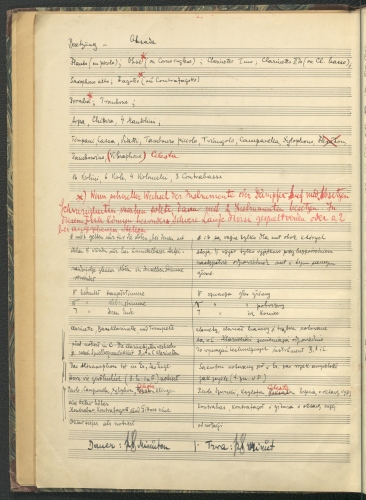
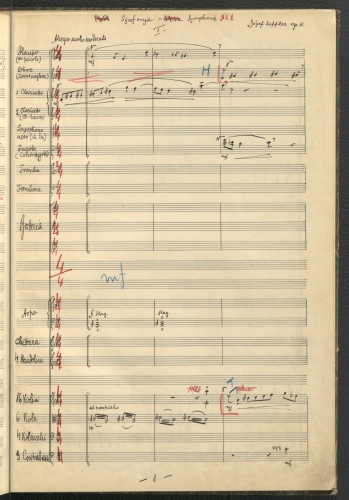

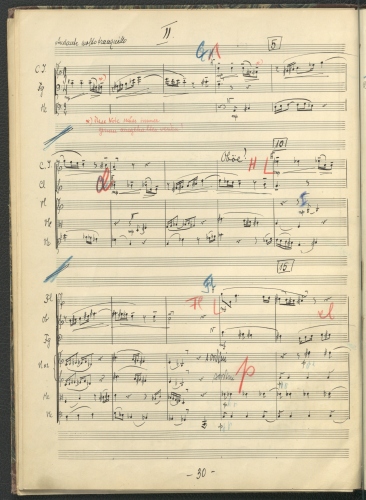
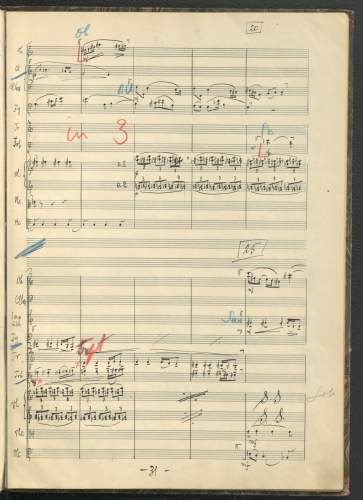
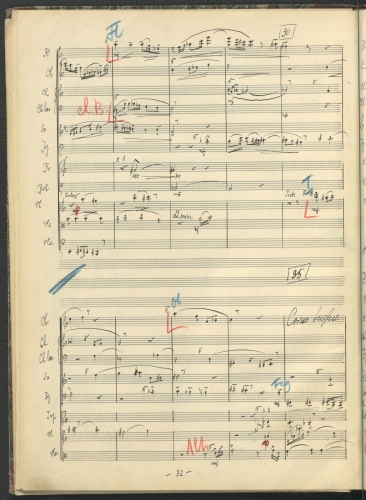
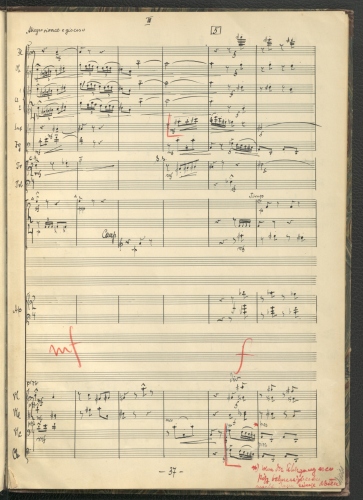
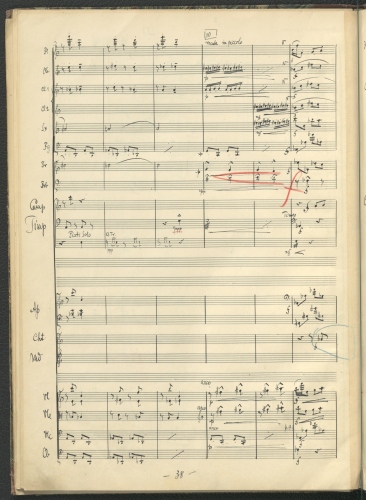














The performance of Symphony No. 1 on 14 January 1936 in Lwów under Ignacy Neumark was a major event in that it was broadcast by all the Polish Radio stations and could also be listened to abroad. BBC programme director Edward Clark sent the composer a congratulatory telegram:
An excellent broadcast. The overall impression – huge
(‘London’s Words of Recognition for a Lwów-Based Composer’, Chwila, 16 Jan. 1936, 4).
